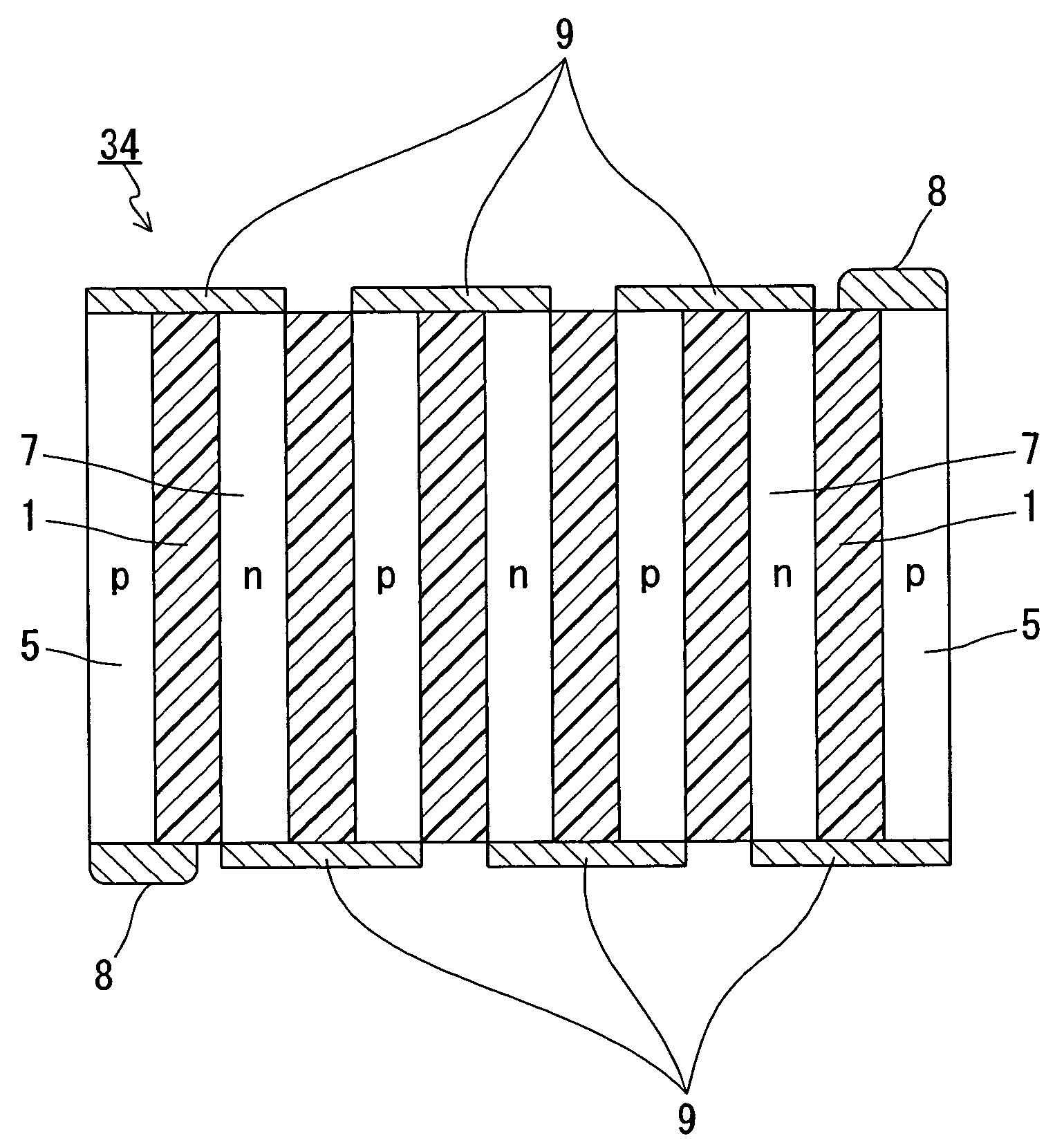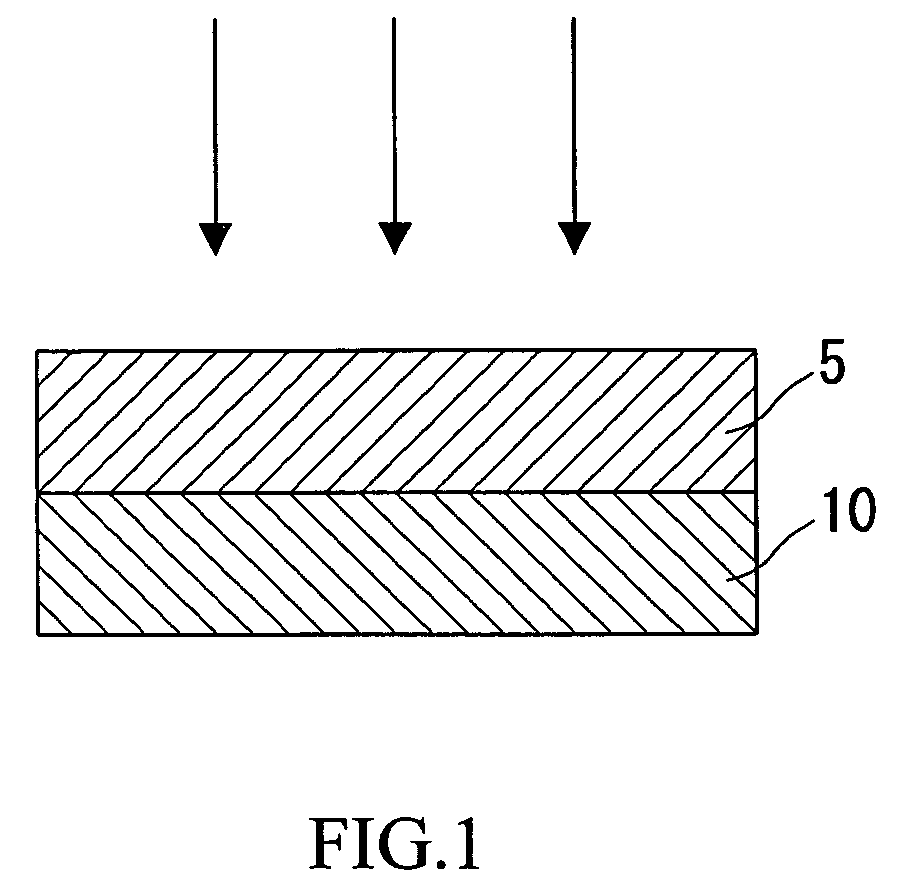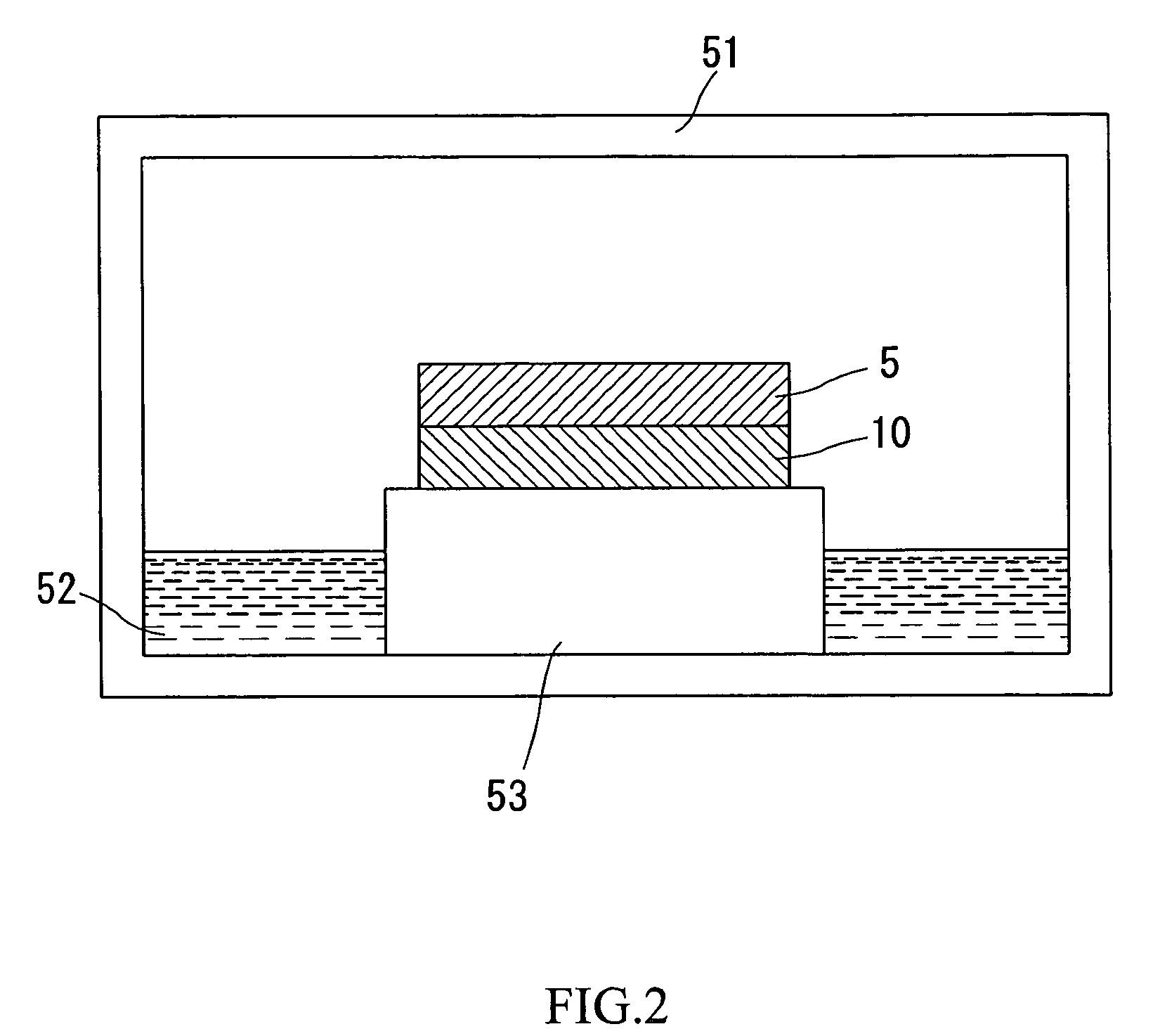Method of manufacturing crystalline film, method of manufacturing crystalline-film-layered substrate, method of manufacturing thermoelectric conversion element, and thermoelectric conversion element
a technology of crystalline film and manufacturing method, which is applied in the direction of thermoelectric device junction materials, thermoelectric device manufacturing/treatment, chemistry apparatus and processes, etc., can solve the problems of difficult to form a thermoelectric conversion layer thereon by epitaxial growth, difficult to peel off epitaxially grown crystalline film from a substrate,
- Summary
- Abstract
- Description
- Claims
- Application Information
AI Technical Summary
Benefits of technology
Problems solved by technology
Method used
Image
Examples
example 1
[0076]A p-type thermoelectric conversion layer 5 represented by the formula Na0.5CoO2 was epitaxially grown on a single-crystal sapphire substrate 10 by sputtering, and an n-type thermoelectric conversion layer 7 represented by the formula Na0.5(Ti0.8Co0.2)O2 was epitaxially grown on another single-crystal sapphire substrate 10. The sputtering was carried out using targets that were weighed to have the compositions of the above respective formulae and were mixed to be uniform under an atmosphere of Ar gas and O2 gas being mixed at 3:1 at a pressure of 5 Pa, with the substrate temperature being kept at 700° C. By the sputtering for about 2 hours, the thickness of both of the thermoelectric conversion layers became about 900 nm.
[0077]The two substrates 10 thus obtained were placed into a chamber in which water was accommodated as in FIG. 2 and were set aside for 3 hours in a constant temperature bath at 70° C. Thereafter, a 0.1 mm-thick acrylic plate 1 was pressed against the surfaces...
example 2
[0080]Peltier-type thermoelectric conversion elements 37 and 38 were fabricated in the same manner as in Example 1 except that a double layer film of a film represented by the formula Na0.5CoO2 and a ZnO film doped with Al at 2% was formed as the n-type thermoelectric conversion layer 7 in place of Na0.5(Ti0.8Co0.2)O2. For the n-type thermoelectric conversion layer, a film represented by the formula Na0.5CoO2 was epitaxially grown to a thickness of 50 nm, and thereafter, on the resulting film, a c-axis oriented ZnO film doped with Al was grown to a thickness of 900 nm.
[0081]In place of the Al-doped ZnO film, it was also possible to epitaxially grow a film represented by the formula (Sr0.9La0.1)TiO3 on the film represented by the formula Na0.5CoO2. This film was epitaxially grown along a (111) plane.
[0082]In the case where Na0.5(Ti0.8Co0.2)O2 was used in place of Na0.5CoO2 as the film having a layered structure as well, it was possible to epitaxially grow an Al-doped ZnO film.
PUM
| Property | Measurement | Unit |
|---|---|---|
| thickness | aaaaa | aaaaa |
| thickness | aaaaa | aaaaa |
| temperature | aaaaa | aaaaa |
Abstract
Description
Claims
Application Information
 Login to View More
Login to View More - R&D
- Intellectual Property
- Life Sciences
- Materials
- Tech Scout
- Unparalleled Data Quality
- Higher Quality Content
- 60% Fewer Hallucinations
Browse by: Latest US Patents, China's latest patents, Technical Efficacy Thesaurus, Application Domain, Technology Topic, Popular Technical Reports.
© 2025 PatSnap. All rights reserved.Legal|Privacy policy|Modern Slavery Act Transparency Statement|Sitemap|About US| Contact US: help@patsnap.com



